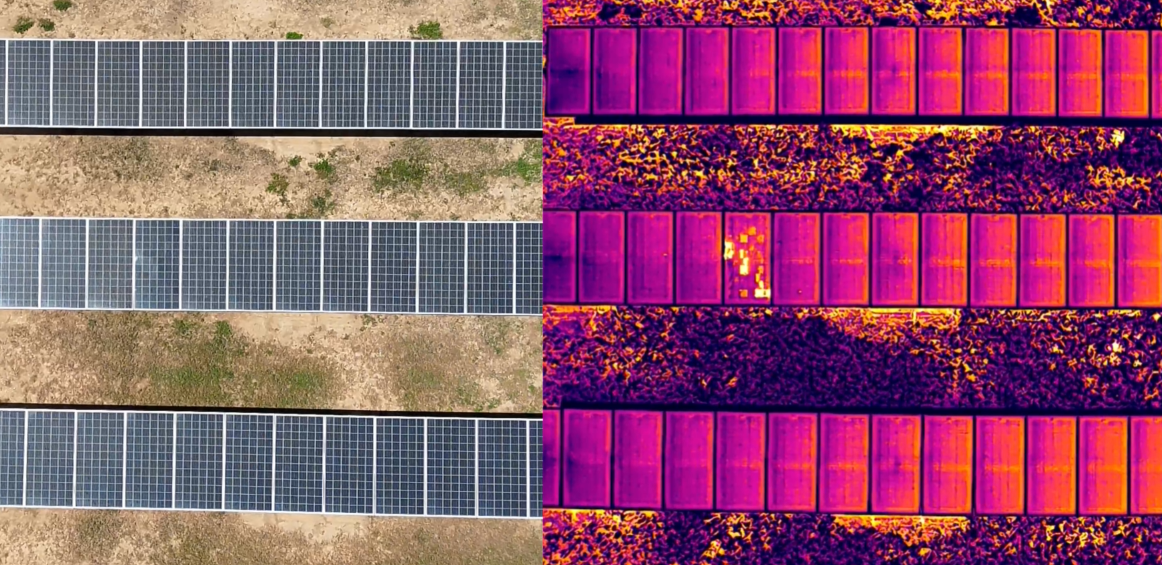PV Farm Hot-Spot Triage (Thermal + RGB)

Executive Summary
Thermal inspections by drone are the fastest, least disruptive way to pinpoint PV performance issues. From above the array we capture module-level temperature patterns in minutes—not days on foot—and do it safely without walking tables. Pairing thermal with RGB frames cuts false positives and gives technicians exact row/string locations and visual context. The outcome is a ranked punch-list that turns guesswork into targeted maintenance: less downtime, fewer truck rolls, and proof of repairs on the follow-up scan.
The value is speed, clarity, and accuracy: instead of walking miles of modules in the heat, the team gets a defect list with photos, locations, and priorities. Maintenance can roll straight to the right tables with the right parts.
What We Look For (Thermal Anomalies)
- Module hotspots (cell or sub-string) indicating cracked cells or bad solder.
- Bypass diode signatures—distinct thermal patterns at junction boxes.
- String outages / mismatch—rows with cooler-than-expected response.
- Soiling / shading bands creating uneven heating across modules.
- Balance-of-system heat at combiner/inverter pads suggesting load issues.
Capture → Map → Action
- Fly a consistent-altitude grid with thermal + RGB to lock alignment.
- Detect anomalies during processing and validate with RGB frames.
- Create a Map of entire site and annotate each anomolie.
- Hand off to maintenance with photos, severity, and recommended checks.
Quality & Safety
- Morning flights reduce thermal shimmer and give consistent module response.
- Uniform altitude and overlap maintain comparable pixel size across sweeps.
- Thermal + RGB pairing avoids false positives and clarifies root causes.
- Ops brief before launch; VO on haul paths; conservative stand-off from tracker rows.
Results
- Isolated multi hotspots and cracked-cell patterns in a single session.
- Delivered annotated snapshots + coordinates and a CSV punch-list by string/row.
- Enabled targeted maintenance instead of full-field walk-downs.
- Created a baseline for future scans to verify repairs and trend issues.
Next Steps (Plain English)
- Re-scan after repairs to confirm hotspots cleared.
- Schedule maintenance scans (quarterly/yearly) to catch faults before it costs you.
- Track repeat offenders—flag modules/strings that recur across scans.
- Share the defect list link with techs and bring the right spares to the row.